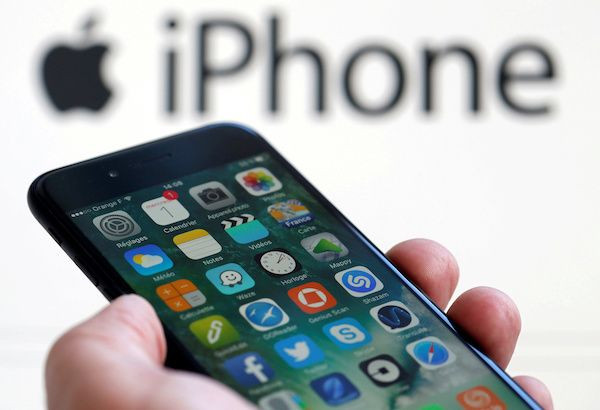Apple iPhone 8 Release Date: USB-C Rumors Pros And Cons

The iPhone 8 rumor mill is abuzz after a recent report from the The Wall Street Journal, which suggests the 2017 flagship will feature a USB-C. Responses to the report have been mixed, with some pundits heralding the idea, while other analysts don’t believe Apple would make such a change. The rumor remains unconfirmed, but will likely remain a heavily discussed topic in the months leading up to the iPhone 8 release date. Here’s a list of pros and cons pertaining to the iPhone 8 featuring a USB-C charging port.
Pro: MacBooks already use USB-C
Apple’s MacBooks have featured USB-C ports as their sole connector since 2015. While the idea of USB-C for the MacBook was meant to simplify the laptops by removing their need for wires, the port configuration actually requires adaptors to connect other devices to MacBooks, including iPhones. If the iPhone 8 has a USB-C port, those who own newer MacBooks would be able to easily connect the smartphone to the laptop and potentially use MacBook and iPhone chargers interchangeably.
Con: iPhone 8 chargers won’t be compatible with older iPhone models
While the iPhone 8 would have a better connection to the MacBook with USB-C, it would lose direct compatibility with older iPhone and iPad models that use Apple’s proprietary Lightning charger. Every Apple smartphone since the iPhone 5 has used the Lightning charger. While the iPhone 8 would come with a USB-C charger in the box, it wouldn’t be easy for users to borrow chargers from friends due to the incompatibility. Many Android users have experienced this in a similar transition from Micro USB to USB-C on several new smartphones.
Pro: USB-C is the new industry standard
More smartphones across the market are moving from Micro USB to USB-C. Many of the latest Android smartphones, including the LG G6, Huawei P10 and Sony Xperia XZ all use USB-C ports. USB-C compatibility would allow iPhone users and Android users to easily interchange chargers if needed.
Con: Apple just removed the iPhone headphone jack
While the iPhone 8 is expected to include many never-before-seen features, Apple has already made a huge leap by removing the headphone jack from the iPhone 7. This move made it so the iPhone 7 now requires Lighting compatible wired headphones. Moving from Lighting to USB-C is bound to stir up even more confusion. USB-C smartphones with no 3.5mm headphone jack, such as the HTC Bolt, similarly use the charging port as a plug for USB-C compatible headphones. After some initial controversy, strong sales suggest Apple users have adjusted well to Lighting headphones on the iPhone 7 (or they may just be using AirPods or Bluetooth headphones). However, the switch from Lighting to USB-C would not only affect the charging ability of the iPhone 8 and would be sure to drum up some controversy.
Pro: USB-C data transfer is faster
Many Android manufacturers are moving from MicroUSB to USB-C because data transfer on the newer protocol is significantly faster. USB-C data transfer can reach 10 gigabits per second. Rumors have long suggested Apple would upgrade its Lighting cables with faster speeds, but that has yet to come to fruition. A switch to USB-C would bring iPhone data transfer up to speed (pun intended).
Con: Off-brand USB-C chargers can be dangerous
With the transition to USB-C for many electronic devices has come increased sales of inexpensive USB-C chargers that can be damaging to expensive devices. Reports have long indicated that low quality USB-C chargers can fry devices, including smartphones and laptops, rendering them unusable. A transition to USB-C could make the iPhone 8 susceptible to similar damage. While Apple is certain to include USB-C chargers and adapters with the smartphone and sell Apple branded replacement cables and adapters, many users go the inexpensive route to save money.
© Copyright IBTimes 2025. All rights reserved.






















